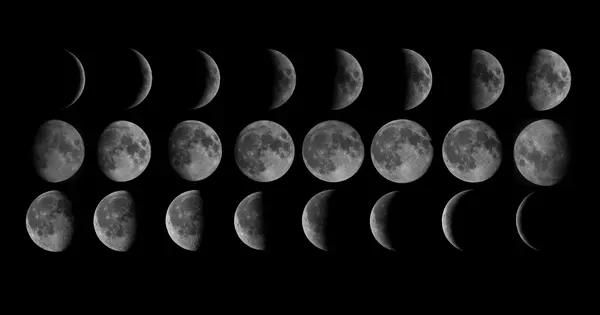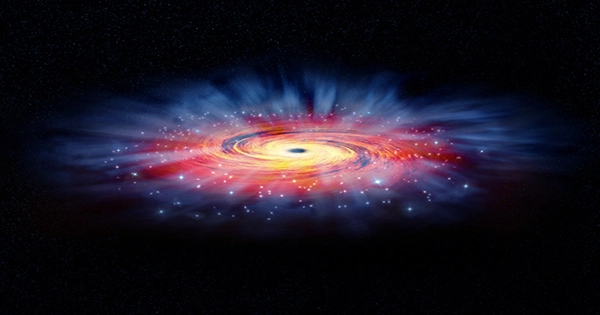Astronomers using the Gemini North telescope, one-half of the International Gemini Observatory operated by the National Science Foundation’s NOIRLab, have captured the eroding remains of over 100 dwarf galaxies as they transition into ultra-compact dwarf galaxies, objects with masses much greater than star clusters but much smaller than dwarf galaxies. These findings suggest that many ultra-compact dwarf galaxies are most likely the fossil remains of typical dwarf galaxies that have had their outer layers stripped away.
Ultra-compact dwarf galaxies (UCDs) are the universe’s densest star clusters. These puzzling structures have eluded classification because they are more compact than other galaxies of similar mass but larger than star clusters—the objects they most closely resemble. The missing element of this jigsaw has been a scarcity of transitional (intermediate) things to investigate. A recent galaxy survey, on the other hand, fills in the gaps, revealing that many of these puzzling objects are likely created by the collapse of dwarf galaxies.

Since their discovery over two decades ago, it has been postulated that UCDs are remains of fragmented dwarf galaxies. Previous studies, however, have not uncovered the expected high population of galaxies in transition.
As a result, an international team of astronomers performed a systematic search for these intermediate-stage objects in the vicinity of the Virgo Cluster, a collection of thousands of galaxies in the direction of the constellation Virgo. The scientists spotted more than 100 of these missing-link galaxies that show every stage of the transformation process using the Gemini North telescope near the top of Mauna Kea in Hawaii.
“Our results provide the most complete picture of the origin of this mysterious class of galaxy that was discovered nearly 25 years ago,” said NOIRLab astronomer Eric Peng, a co-author on the publication that describes these findings. “Here we show that 106 small galaxies in the Virgo cluster have sizes between normal dwarf galaxies and UCDs, revealing a continuum that fills the ‘size gap’ between star clusters and galaxies.”
The researchers started by looking at photos from the Next Generation Virgo Cluster Survey, which was taken using the Canada-France-Hawaii Telescope. Despite identifying hundreds of potential UCD progenitors, they were unable to prove their true nature. The problem was that UCDs surrounded by star envelopes are indistinguishable from typical galaxies located further outside the Virgo Cluster.
To identify the possible UCD progenitors from the background galaxies, the scientists conducted additional spectroscopic observations with Gemini North to get more precise distance estimations. These observations enabled the researchers to exclude all of the background galaxies from their samples, leaving only the UCDs of the Virgo Cluster.
Many dwarf galaxies with ultra-compact core star clusters are scattered throughout this huge survey. These galaxies represent the early stages of the transformation process, implying that after surrounding giant galaxies strip these dwarfs of their outer layers of stars and gas, what remains will be an object identical to the late-stage UCDs already detected.
The researchers also discovered a large number of objects with very long and diffuse stellar envelopes surrounding them, indicating that they are currently changing as their stars and dark matter are being stripped away. Within their large sample, the researchers discovered artifacts at various stages of evolution that, when placed in order, give a compelling story about the morphology of UCDs. Furthermore, virtually all of the candidates were located near giant galaxies, implying that their local environment was significant in their development.
“After analyzing the Gemini observations and removing all of the background contamination, we discovered that these transition galaxies were almost exclusively found near the largest galaxies.” “We knew right away that environmental transformation had to be important,” said Kaixiang Wang, a Ph.D. student at Peking University and the paper’s lead author.
These findings not only pinpoint the environment in which UCDs dwell but also provide significant insight into how many of these items exist and what the complete sequence of their evolutionary change looks like.
“It’s exciting that we can finally see this transformation in action,” Peng remarked. “It tells us that many of these UCDs are visible fossil remnants of ancient dwarf galaxies in galaxy clusters, and our results suggest that there are likely many more low-mass remnants to be found,” he said.
“This study demonstrates how large surveys can improve our understanding of the most fundamental questions in astronomy, such as galaxy evolution,” says Chris Davis, NOIRLab NSF Program Director. “NSF’s NOIRLab is a world leader in supporting astronomical surveys and—importantly—providing community and public access to the data and the amazing resulting discoveries.”
















